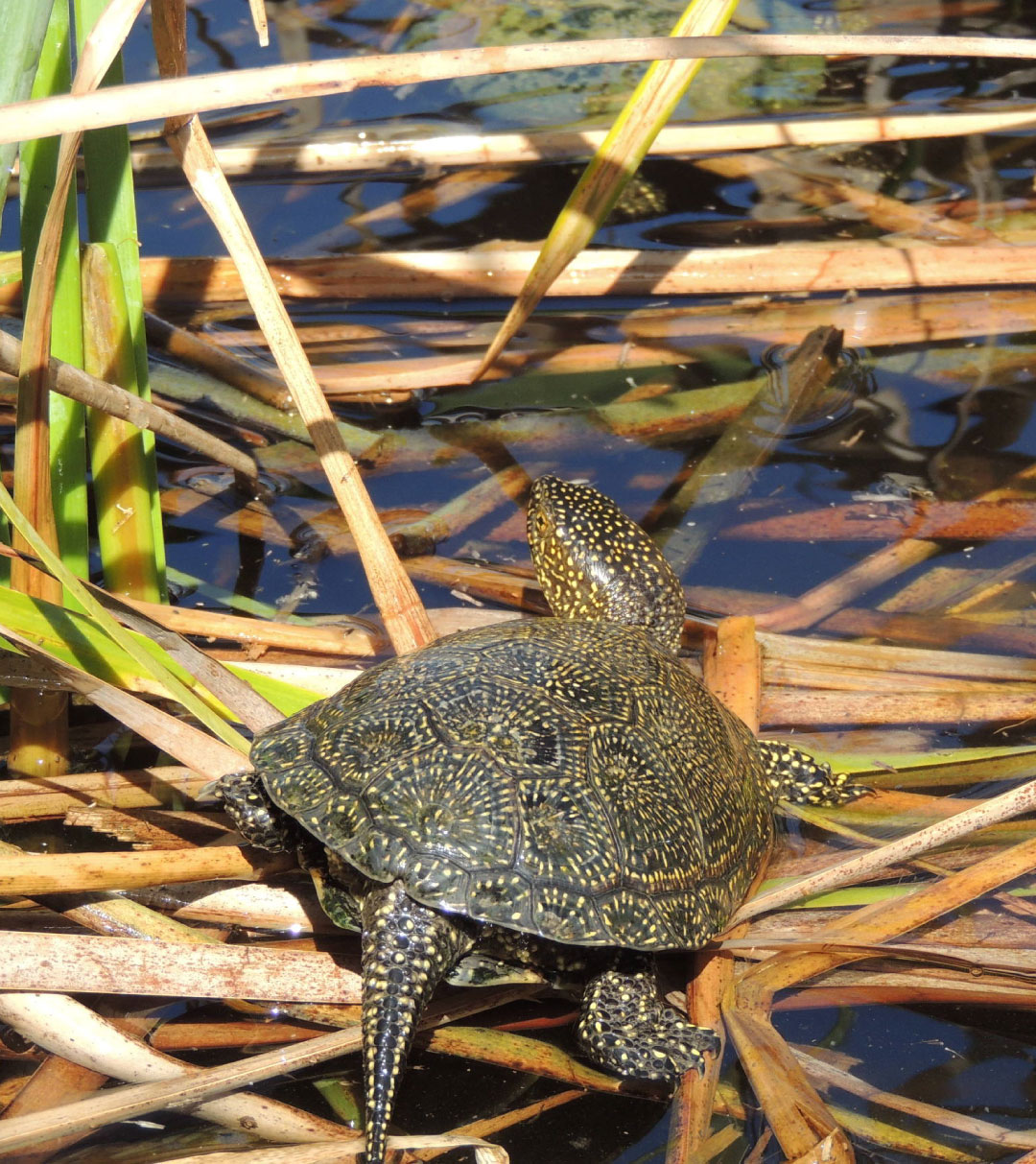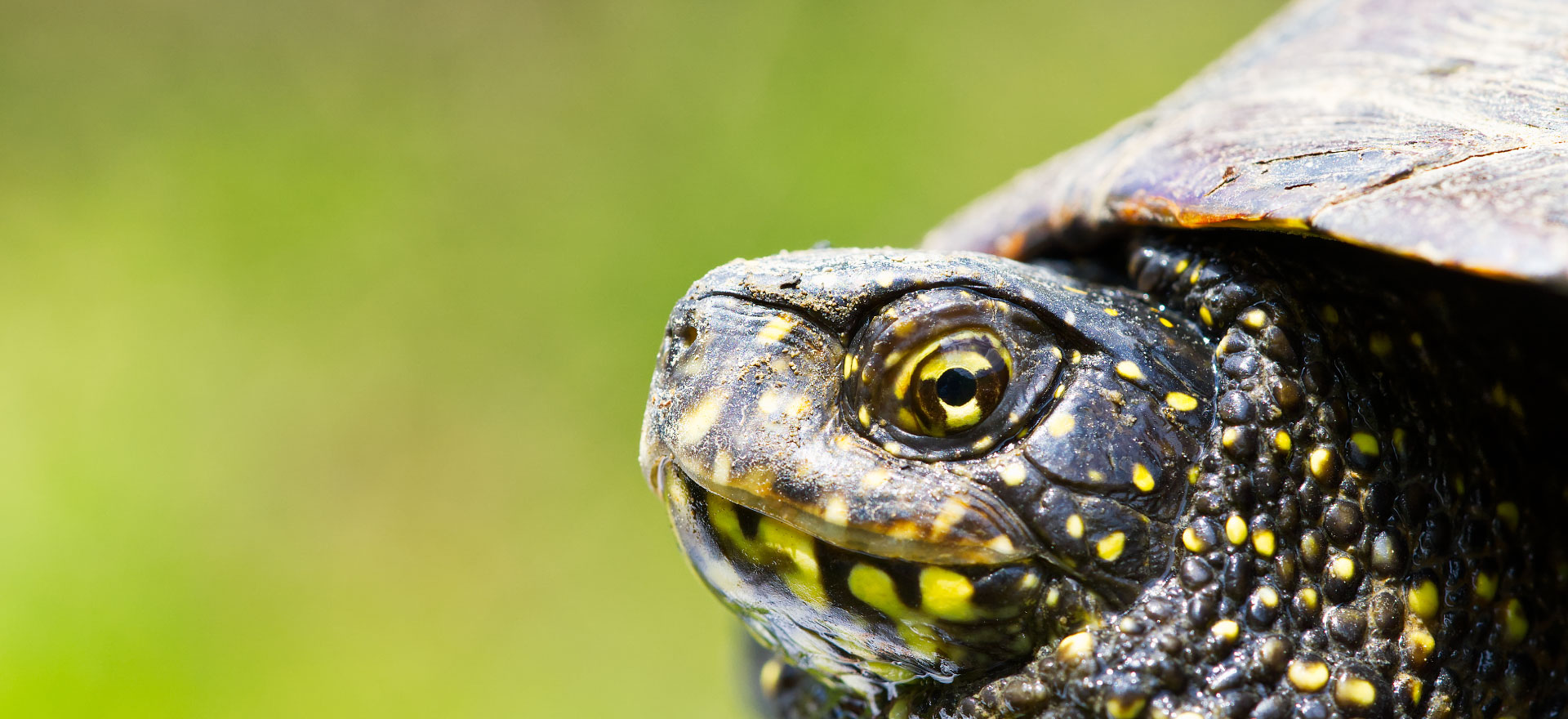
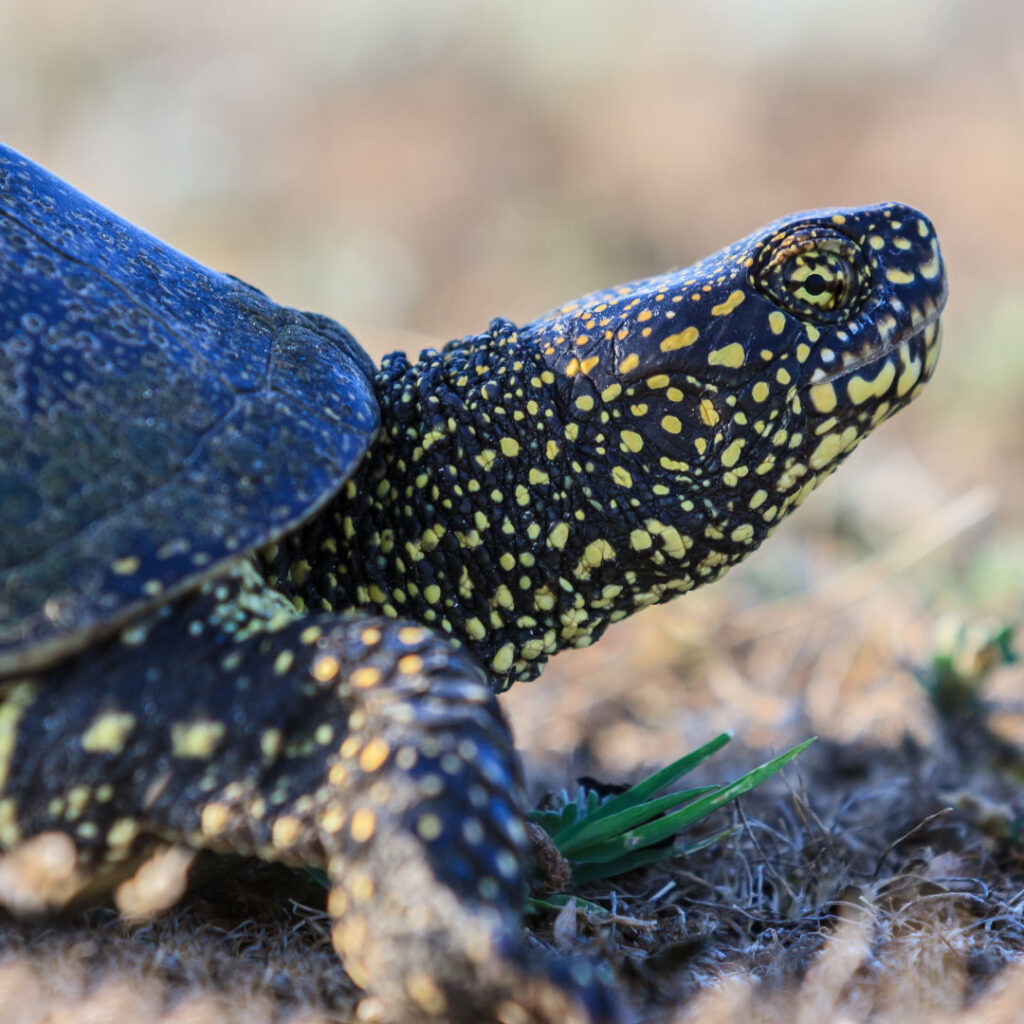
Ecology
The European pond terrapin Emys orbicularis is one of the most widespread tortoise species in southern and central Europe, western Asia and northern Africa.
Its habitat is wet environments such as ponds, lakes, rivers and marshes. It has a mixed herbivorous and carnivorous diet.
The diversity between the sexes is evident: adult males are always smaller in size than females, with a less prominent carapace than in females and a concave platron that is distinctly shorter than the length of the carapace, while in females it is flat and equal or (rarely longer) than the length of the carapace. It selects open terrestrial environments with soft soil for nesting. Sexual maturity is reached at 5-6 years of age. Females lay an average of 7-8 eggs per brood and cover the nest with excavated soil before abandoning it. The young emerge after about 90-100 days of incubation. In cases of late reproduction, the young hibernate in the soil where the eggs were laid and emerge early the following spring when conditions are more favorable.
Compared with many other reptiles and amphibians, this species has a relatively long life expectancy. However, mortality is very high for neonates due to the high number of predators.
Conservation Status
E. orbicularis is a protected species, included in Annexes II and IV of the Habitats Directive 92/43/EEC, and its trade is prohibited by the 1979 Bern Convention. According to the most recent report available for Italy, (Art. 17 of the Habitats Directive report 2013-2018) E. orbicularis has an unfavorable inadequate or poor conservation status (U1 and U2, for Slovenia and Italy, respectively) in the main biogeographical areas where it is present, and in particular in the area of relevance to the present project (biogeographical area “continental” and “Mediterranean”) with populations considered to be “declining.” This is in line with the fact that in the last century the species has faced a drastic decline due to extensive draining and reclamation of wetlands. The European Red List classifies E. orbicularis as Near Threatened (NT): however, the assessment was made in 2004 and appears completely anachronistic compared to the collapse the species has experienced within its European range, and as also highlighted in the Red List itself urgently needs updating. The Italian Red List considers the species endangered (EN), while in Slovenia E. orbicularis is classified as endangered (EN). The species is also protected by Slovenian national laws.
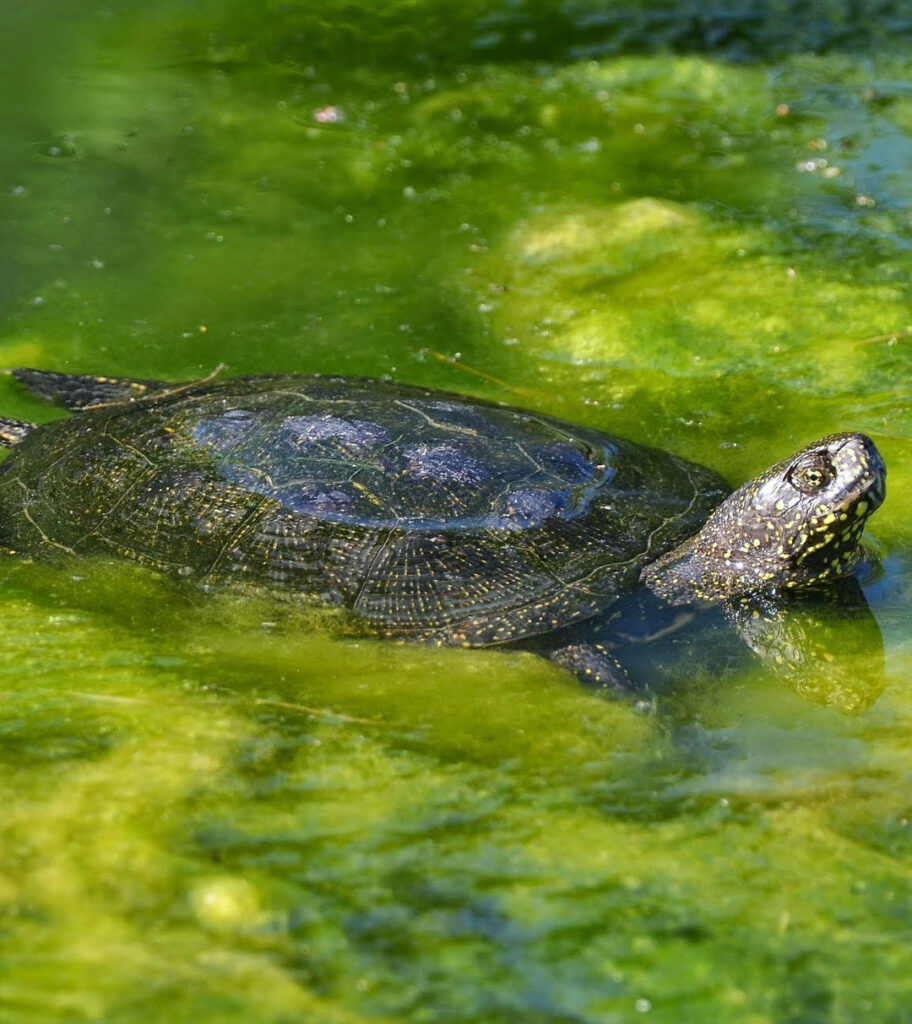
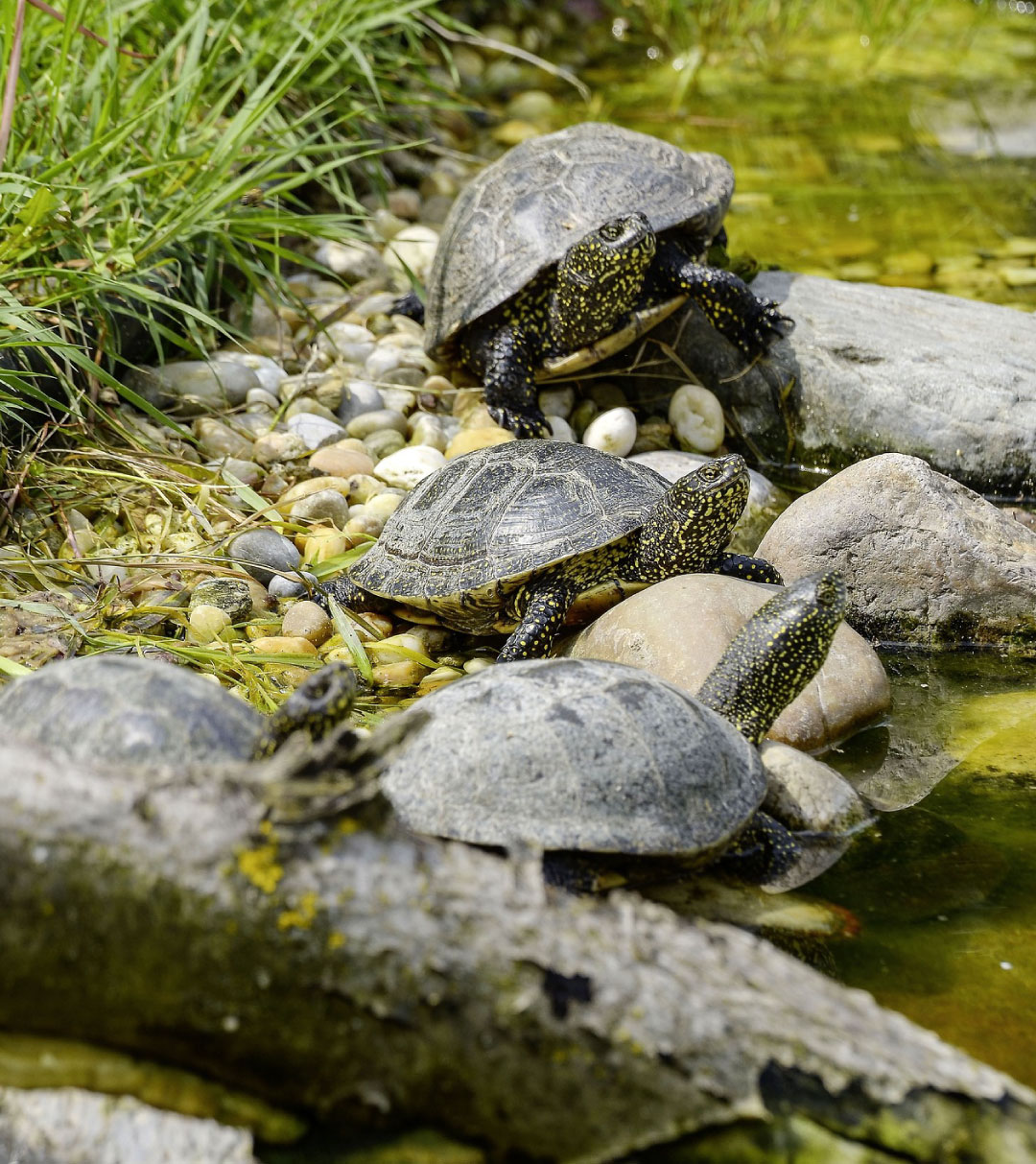
Threats
Over the past century, E. orbicularis has undergone a sharp decline in Italy and Slovenia, and the threats, which are nearly the same in the two countries, are mentioned below:
- Alteration, fragmentation and disappearance of natural habitats. The cutting of forest portions, riparian forests, and reclamation or alteration of water bodies and surrounding terrestrial habitats has been shown to be the main cause of the decline in E. orbicularis populations
- Alien pond terrapins Trachemys scripta is an Invasive Alien Species and has long been the most popular pond terrapin in the animal trade, with more than 52 million individuals exported from the U.S. between 1989 and 1997, while simultaneously being the world’s most abandoned reptile introduced into non-native environments. The species shows advantageous competitive characteristics when compared to the native species.
- Disturbance and predation of eggs, hatchlings, and juvenile individuals. For some of the Italian populations of E. orbicularis that have been monitored for some time, predation on nests, eggs and younglings has proven to be important and critical for the survival of isolated populations or in areas where land management is poor or absent with peaks of predation that in the case of nests can reach up to 85%.
- Loss of genetic identity of populations. Because there are several major evolutionary lineages of E. orbicularis in Italy and two distinct species, another conservation risk is the loss of genetic diversity, both through crosses between individuals belonging to the different genetic lineages and between the two species, in captivity and in the wild. In fact, the illegal capture of individuals can lead to their movement between different phylogeographic areas. All this can alter the genetic identity of Italian endemic populations, causing (or potentially causing) the disappearance of genetically pure individuals useful for breeding and reintroduction programs.
- Absence of conservation guidelines for the species. The problem of the current lack of coordination among the parties involved in the conservation of the species cannot be underestimated. This in fact can be a major risk in the organization and activation of conservation programs.
Sicilian pond terrapin Emys trinacris
The pond terrapin population in Sicily has long remained on the fringes of scientific interest. In fact, its rediscovery, from a taxonomic point of view, dates back to 2005 with the description of Emys trinacris, a species separate from Emys orbicularis, to which it was previously attributed.
The species’ scientific name is derived from the word Trinacria, which in ancient Greek referred to present-day Sicily.
Emys trinacris is an endemic species of Sicily for which the recent Report ex Art. 17 of the Habitats Directive highlights a favourable conservation status. However, this species locally suffers several threats linked to illegal taking in the wild and the presence of allochthonous tortoises in its sites of presence.
